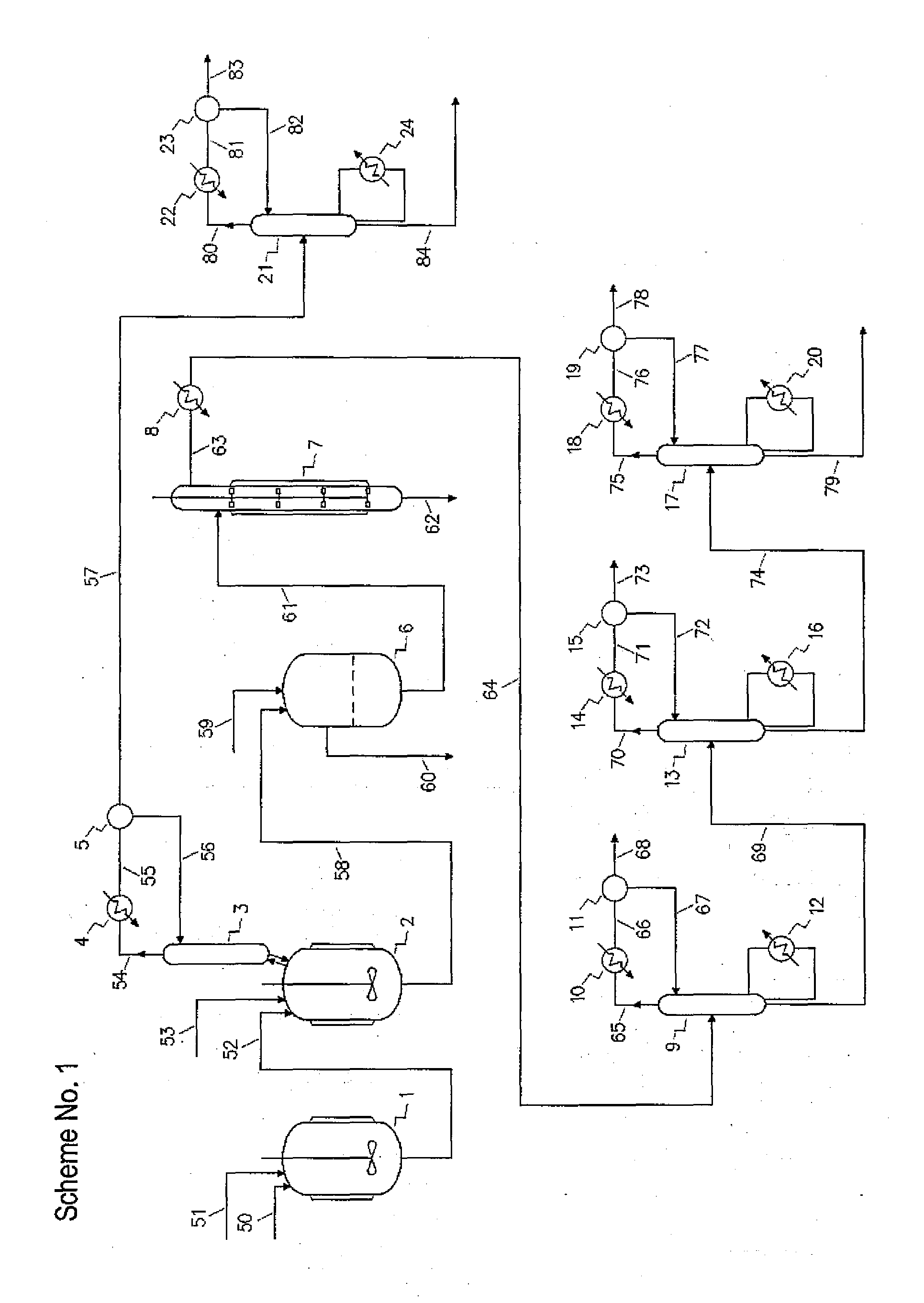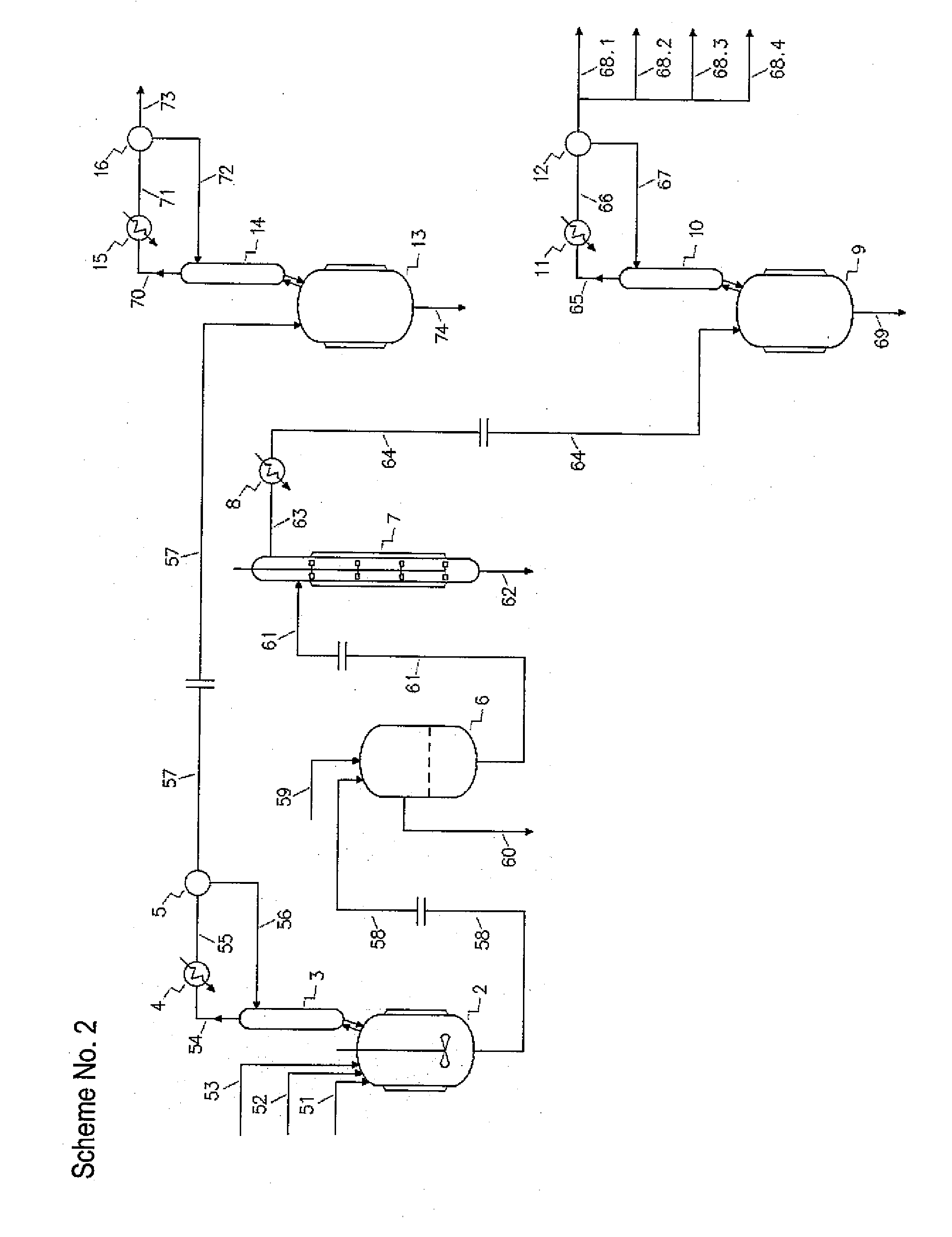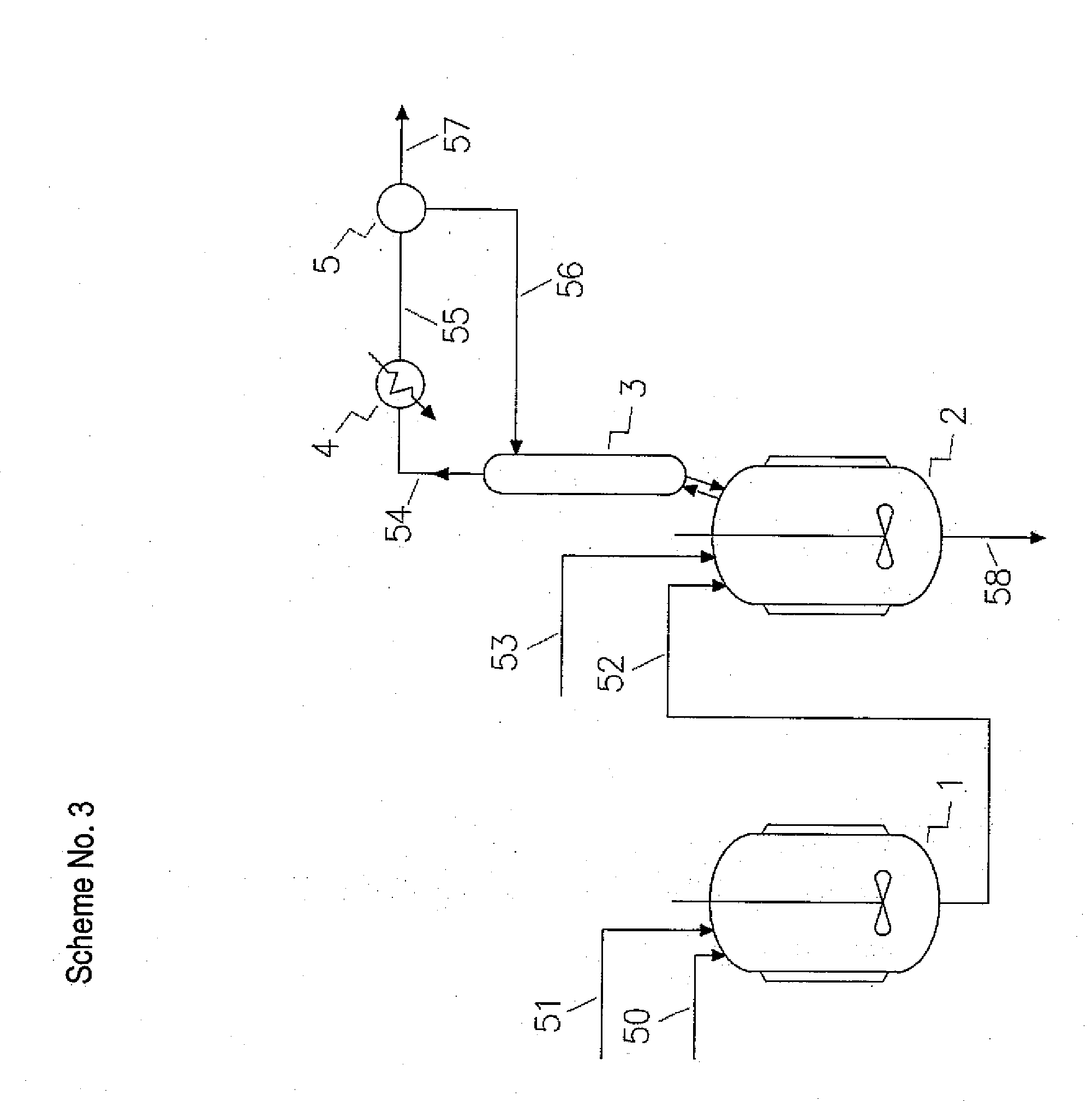Process for the manufacture of epoxy-monomers and epoxides
a technology of applied in the field of process for producing epoxy monomers and epoxides, to achieve the effects of low, even zero, amount of chlorinated compounds, and high renewable carbon conten
- Summary
- Abstract
- Description
- Claims
- Application Information
AI Technical Summary
Benefits of technology
Problems solved by technology
Method used
Image
Examples
example 1
[0232]233.5 g / h of 3-chloropropanediol with purity of 96.63% and 119.0 g / h (grams per hour) of sodium hydroxide aqueous solution with concentration of 49.77% were fed continuously into a first reactor of the production cascade. The five-neck glass reactor was equipped with a glass stirrer, thermometer, 3-chloropropanediol inlet, sodium hydroxide solution inlet, product outlet and was situated in a bath filled with cold water. The molar ratio between sodium hydroxide and 3-chloropropanediol was 0.726.
[0233]The reaction mixture with residual alkalinity was transferred under control mode by vacuum into a second reactor. The five-neck glass reactor was equipped with a glass stirrer, thermometer, reaction mixture inlet, azeotropic agent inlet, and product overflow and was situated in a heating bath filled with hot water. The reactor was fitted with distilling equipment for azeotropic removal of reaction water. The reaction water in amount of 93.5 ml / h (milliliters per hour) was removed b...
example 2
[0236]In the experimental unit according to Example 1, 224.0 g / h of 3-chloropropanediol with purity of 96.57% and 125.5 g / h of sodium hydroxide aqueous solution with concentration of 49.60% were reacted. The molar ratio between sodium hydroxide and 3-chloropropanediol was 0.795. The reaction mixture with residual alkalinity was transferred into the second reactor. The reaction water in amount of 85.0 ml / h was removed by azeotropic vacuum distillation with 144.9 g / h of iso-butanol and the mixture of reaction products with water content lower than 3% was collected. By deep cooling of exhaust gas 10.8 g / h of iso-butanol and water was trapped. 380.2 g / h of the collected product was then filtered and the filter cake was washed by means of 40.3 g / h of iso-butanol to give 86.5 g / h of wet sodium chloride to be further dried, while the filtrate and the washing fluid were combined to give 328.7 g / h and analyzed by GC. The molar yield of glycidol based on 3-chloropropanediol converted was calc...
example 3
[0238]In the experimental unit according to Example 1, 208.5 g / h of 3-chloropropanediol with purity of 96.57% and 132.5 g / h of sodium hydroxide aqueous solution with concentration of 49.60% were reacted. The molar ratio between sodium hydroxide and 3-chloropropanediol was 0.902. The reaction mixture with residual alkalinity was transferred into the second reactor. The reaction water in amount of 89.0 ml / h was removed by azeotropic vacuum distillation with 144.9 g / h of iso-butanol and the mixture of reaction products with water content lower than 3% was collected. By deep cooling of exhaust gas 4.1 g / h of iso-butanol and water was trapped. 395.9 g / h of the collected product was then filtered and the filter cake was washed by means of 40.3 g / h of iso-butanol to give 100.0 g / h of wet sodium chloride to be further dried, while the filtrate and the washing fluid were combined to give 331.0 g / h and analyzed by GC. The molar yield of glycidol based on 3-chloropropanediol converted was calc...
PUM
| Property | Measurement | Unit |
|---|---|---|
| Temperature | aaaaa | aaaaa |
| Temperature | aaaaa | aaaaa |
| Fraction | aaaaa | aaaaa |
Abstract
Description
Claims
Application Information
 Login to View More
Login to View More - R&D
- Intellectual Property
- Life Sciences
- Materials
- Tech Scout
- Unparalleled Data Quality
- Higher Quality Content
- 60% Fewer Hallucinations
Browse by: Latest US Patents, China's latest patents, Technical Efficacy Thesaurus, Application Domain, Technology Topic, Popular Technical Reports.
© 2025 PatSnap. All rights reserved.Legal|Privacy policy|Modern Slavery Act Transparency Statement|Sitemap|About US| Contact US: help@patsnap.com



